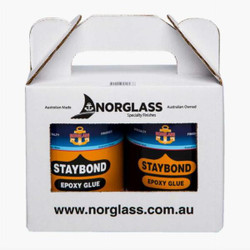Description
Jeffery's Marine Glue is a traditional product now owned by Davey & Company. This product has been the premier choice for traditional deck seaming around the world for decades.
Still produced in England from the original formula, it is as reliable today as throughout the last century. It will adhere tenaciously to the seam for many years, remaining flexible in low temperatures and withstanding softening at high temperatures.
To apply, once carefully heated to a working temperature of around 370°F (190°C) it can be poured onto the prepared seams. Two applications are needed to ensure that all steam and air is released.
Average usage: 1kg to a 10 metre run. Refer to the Jeffrey Marine Glue Data Sheet for safety information.
Note that Jeffery’s No2 Black Marine Glue is not a Tropics version of the glue, however it used worldwide. In the tropics thought has to be given to regularly dousing the deck with water.
| SKU | Size | Container | Davey's Product Code |
|---|---|---|---|
| 026230 | 12.5kg (27.5lbs) | Carton | 5025/00/0125 |
| 026231 | 25.0kg (55llbs) | Tin Bucket | 5025/00/025 |
Instructions for Melting & Applying
Break the glue into small pieces and put in a clean pot to three-quarters full. Place over heat source.
Melt glue slowly, giving an occasional stirring until it flows freely. This will be at about 200°C
Care must be taken during the melting process as prolonged overheating will damage certain qualities of the glue.
The caulking must be hammered well down into the seams. Caulking and seams must be free from dust, grease, etc., which may prevent adhesion.
Due to the movement of timber, and as confirmed by practical experience, we would suggest the following minimum seam dimensions to give a trouble-free waterproof deck.
| Timber | Width of planks | Min. Seams Width | Min. Seam Depth |
|---|---|---|---|
| Teak | 50 mm | 2.4 mm | 9.6 mm |
| Teak | 75 mm | 6.5 mm | 12.5 mm |
| Softwoods | 50 mm | 6.5 mm | 9.6 mm |
| Softwoods | 75 mm | 8 mm | 12.5 mm |
Two applications of glue should be made - the first coming level with the top of the seam. The first application will release a mass of steam bubbles and air into the seam. These will rise to the surface of the glue, but some will not be released due to the chilling of the surface.
The second application will then reheat the top of the glue, allowing the bubbles to float out into the bead, which will later be scraped off and discarded.








